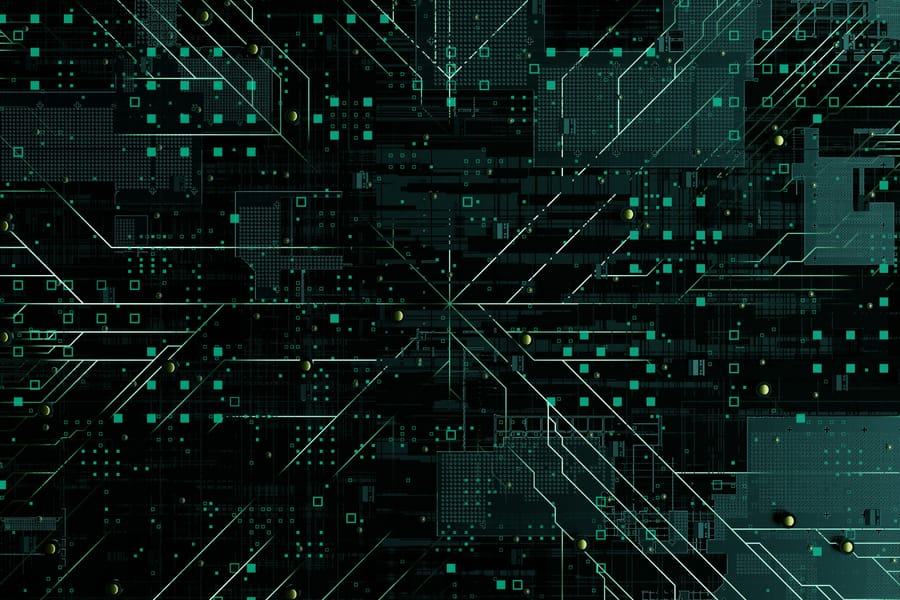The concept of Artificial Intelligence is characterised by conceptual plurality, reflecting divergent disciplinary perspectives and evolving technological capacities (Bringsjord & Govindarajulu 2024). Whilst numerous definitions have been proposed, there is no universally accepted formulation. Instead, understandings of AI range from attempts to replicate human cognition to approaches centred on rational problem-solving or autonomous behaviour. These definitional variations are not merely terminological but derive from deeper ontological and epistemological assumptions about intelligence, computation, and agency. The origins of Artificial Intelligence as an academic field are typically traced to the Dartmouth Summer Research Project on Artificial Intelligence in 1956, led by John McCarthy and colleagues. Their foundational proposal posited that "every aspect of learning or any other feature of intelligence can in principle be so precisely described that a machine can be made to simulate it" (McCarthy et al. 2006, 2). This assertion treated intelligence as a formalisable and computable property, implying that intelligent behaviour could, at least theoretically, be replicated by machines.
McCarthy later offered a more concise formulation, defining AI as "the science and engineering of making intelligent machines, especially intelligent computer programmes" (McCarthy 2004). This dual characterisation presents AI as both a domain of scientific inquiry and a practical engineering discipline, without making specific claims regarding its resemblance to human cognition. Marvin Minsky similarly described AI as "the science of making machines do things that would require intelligence if done by man" (Minsky 1969, v), though this behavioural definition predates contemporary understanding of AI capabilities and limitations. His definition emphasises a behavioural criterion: intelligence is inferred from the capacity to perform tasks functionally associated with human intelligence, regardless of internal architecture or mechanisms. This behavioural criterion has its intellectual roots in Alan Turing's foundational work. In his influential 1950 paper, Turing proposed the "imitation game", later known as the Turing Test, as a criterion for machine intelligence. Rather than seeking to define thinking or understanding per se, he suggested that if a machine's linguistic output could not be distinguished from that of a human, it should be considered intelligent (Turing 1950). This pragmatic approach prioritised observable behaviour over inaccessible mental states and has significantly shaped subsequent research in AI.
To address the conceptual heterogeneity in AI definitions, Russell and Norvig (2021, 19-20) proposed a two-dimensional typology based on whether systems are human-like versus rational, and whether they think versus act. This framework yields four distinct paradigms. The first, thinking humanly, conceptualises AI as the replication of human cognitive processes, with Haugeland (1989) characterising this approach as constructing "machines with minds, in the full and literal sense". The second paradigm, acting humanly, attributes intelligence based on behavioural equivalence with human agents, exemplified by the Turing Test's focus on convincing imitation of human responses. The third approach, thinking rationally, grounds intelligence in formal logic and reasoning that conforms to normative standards of validity and deduction—historically termed the "laws of thought". Finally, acting rationally views AI as goal-oriented behaviour in dynamic environments, based on rational decision-making under uncertainty. Russell and Norvig associate this with intelligent agents that perceive their surroundings and act to maximise expected outcomes, whilst Luger (2009, 1) defines AI as "the branch of computer science that is concerned with the automation of intelligent behaviour". This typology reveals underlying philosophical and methodological commitments beyond mere classification. The increasing dominance of the "acting rationally" paradigm reflects a shift towards domain-specific optimisation and adaptive performance, distancing current research from the early ideal of general human-level cognition.
Contemporary policy frameworks have converged on more technical definitions emphasising AI's inferential capabilities. The Organisation for Economic Co-operation and Development's 2024 updated definition characterizes AI systems as "machine-based system[s] that, for explicit or implicit objectives, infer, from the input it receives, how to generate outputs such as predictions, content, recommendations, or decisions that can influence physical or virtual environments" (OECD 2024). This definition, adopted by the European Union's Artificial Intelligence Act (EU 2024), emphasises the distinction between traditional software that executes predetermined rules and AI systems that derive patterns and generate outputs through inference mechanisms. The EU definition further specifies that AI systems are "designed to operate with varying levels of autonomy and that may exhibit adaptiveness after deployment" (EU AI Act 2024, Recital (12)).
The emergence of large language models and generative AI since 2020 (following the release of GPT-3, a transformative model with unprecedented scale and generative capabilities, and the ensuing rapid progress in AI architectures and applications) has further complicated definitional debates. Contemporary systems like GPT models and their successors demonstrate capabilities that challenge traditional distinctions between narrow and general AI, exhibiting emergent behaviours across multiple domains while remaining fundamentally different from human intelligence (Mollick 2024, Stanford HAI 2024). The foregoing analysis demonstrates that Artificial Intelligence lacks a singular, universally accepted definition. Its conceptual history reveals a progression from early efforts to replicate human cognition to contemporary models grounded in rational agency and adaptive behaviour. The classificatory framework proposed by Russell and Norvig remains a useful tool for mapping definitional diversity, whilst philosophical critiques underscore the necessity of conceptual precision. As AI systems become increasingly embedded in societal infrastructures, definitional debates must account not only for technical sophistication but also for the ethical, cognitive, and ontological stakes involved. A coherent understanding of AI, therefore, requires both historical sensitivity and interdisciplinary engagement.
References:
1. Bringsjord, Selmer, and Naveen Sundar Govindarajulu. 2024. ‘Artificial Intelligence’. In The Stanford Encyclopedia of Philosophy (Fall 2024 Edition), edited by Edward N. Zalta and Uri Nodelman. https://plato.stanford.edu/archives/fall2024/entries/artificial-intelligence/ – ^ Back
2. European Union. 2024. Artificial Intelligence Act (Regulation 2024/1689). Available at: https://eur-lex.europa.eu/legal-content/EN/TXT/HTML/?uri=OJ:L_202401689 ^ Back
3. Haugeland, John. 1989. Artificial Intelligence: The Very Idea. Cambridge, MA: MIT Press. ^ Back
4. Luger, George F. 2009. Artificial Intelligence: Structures and Strategies for Complex Problem Solving, 6th ed. Pearson Education India. ^ Back
5. McCarthy, John, Marvin L. Minsky, Nathaniel Rochester, and Claude E. Shannon. 2006. ‘A Proposal for the Dartmouth Summer Research Project on Artificial Intelligence, August 31, 1955’. AI Magazine 27 (4): 12–14. ^ Back
6. McCarthy, John. 2004. ‘What Is Artificial Intelligence’. Stanford University. http://www-formal.stanford.edu/jmc/whatisai/whatisai.html – ^ Back
7. Mollick, Ethan. 2024. Co-Intelligence: Living and Working with AI. London: Penguin. ^ Back
8. OECD. 2024. Explanatory Memorandum on the Updated OECD Definition of an AI System. OECD Artificial Intelligence Papers. Paris: OECD Publishing. Available at: https://www.oecd.org/en/.../623da898-en.html ^ Back
9. Russell, Stuart, and Peter Norvig. 2021. Artificial Intelligence: A Modern Approach, 4th ed. Harlow: Pearson. ^ Back
10. Stanford HAI (Human-Centered AI Institute). 2024. Artificial Intelligence Index Report 2024. Stanford University. Available at: https://hai.stanford.edu/assets/files/hai_ai-index-report-2024-smaller2.pdf ^ Back
11. Turing, Alan M. 1950. ‘Computing Machinery and Intelligence’. Mind 59 (236): 433–460. ^ Back







